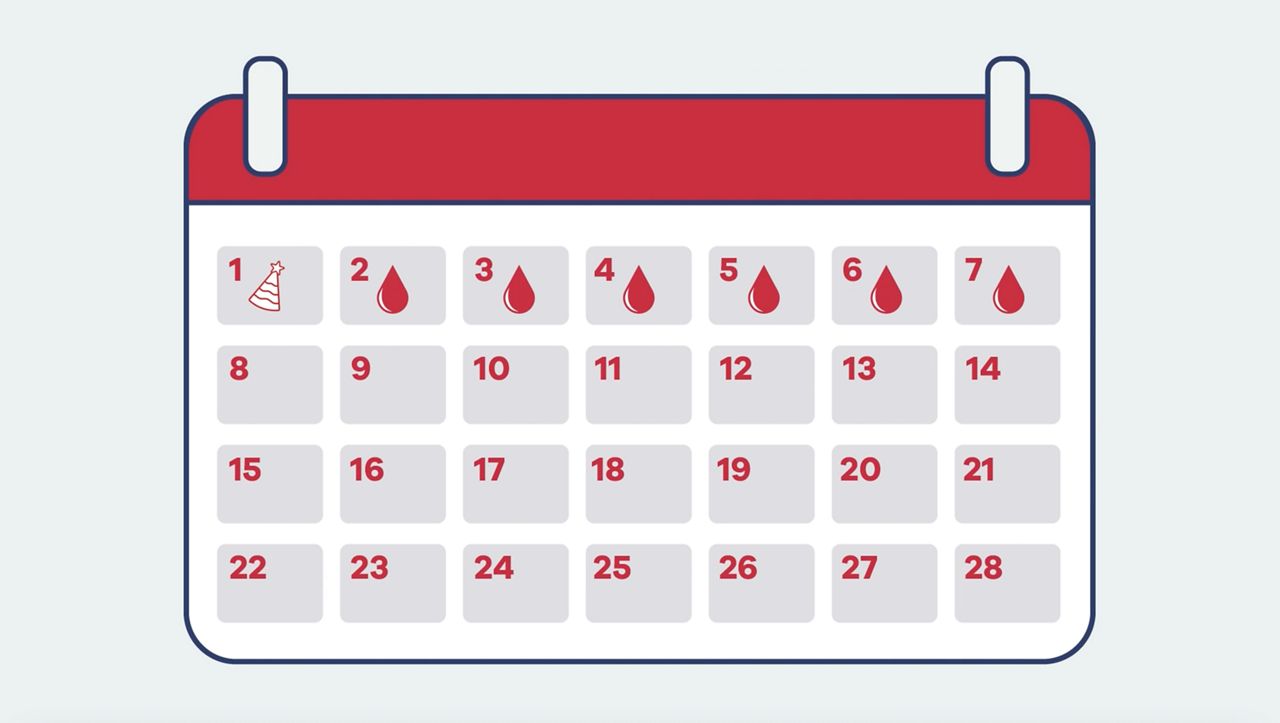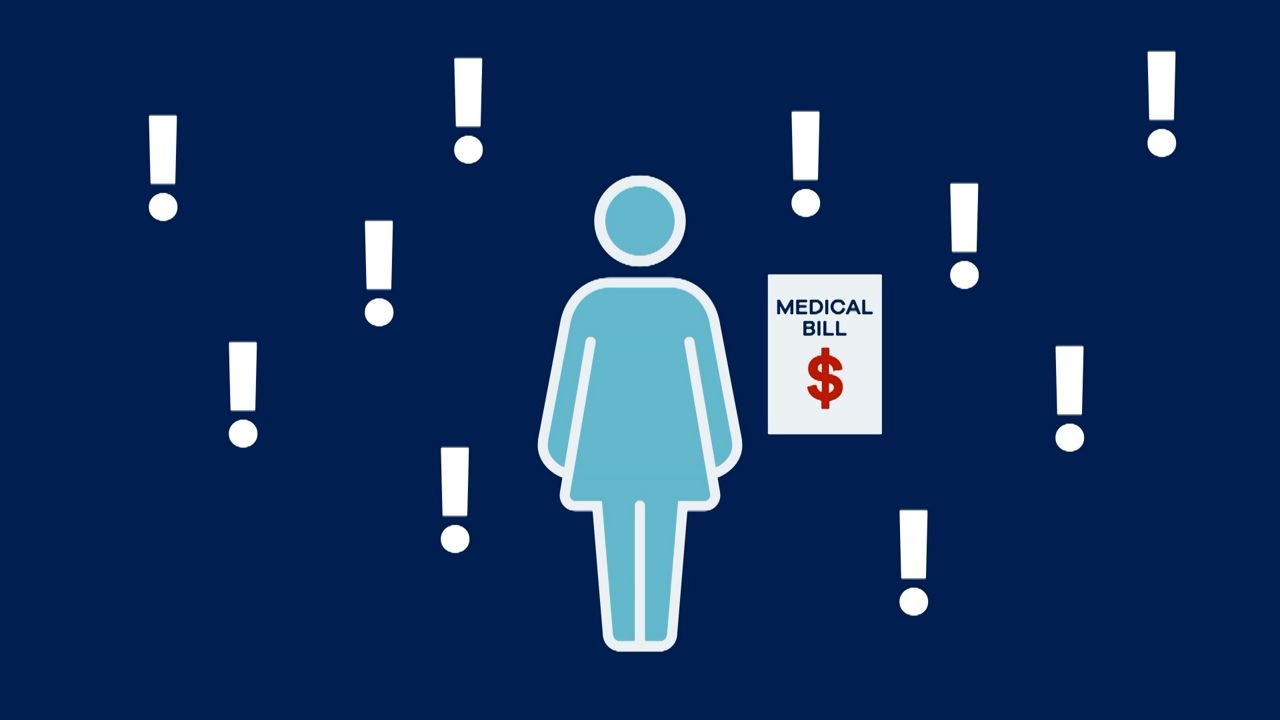It all starts with an egg cell and a sperm cell...conception, that is.
While most people know this, studies have shown that many are confused about the details of ovulation, its timing in the menstrual cycle, and its impact on fertility.
Each month, until menopause, a woman’s body gets a surge of luteinizing hormone, or LH, which causes a mature egg to release from one of her ovaries. This is called ovulation.
“Ovulation will typically happen about two weeks prior to the beginning of the next cycle,” said Dr. Anna Barbieri, assistant clinical professor of obstetrics and gynecology at Mount Sinai.
For someone with a 28-day menstrual cycle – day one being the day the period starts – ovulation occurs around day 14. But for someone with a 25-day cycle, it happens around day 11.
When the egg emerges from its follicle, the follicle forms a structure called the corpus luteum – which releases progesterone and estrogen. These hormones make the uterine lining thick and spongy to prepare for a possible pregnancy.
The egg then makes its journey down the fallopian tube – which can take up to a day.
If intercourse occurs around the time of ovulation, millions of sperm will swim up the cervix, uterus, and fallopian tubes – and can potentially fertilize the egg.
Sperm can survive in the body for a few days before ovulation, which means there’s a period of time, called the “fertile window,” when it’s possible for a pregnancy to occur.
“That will be roughly a day or two prior to ovulation to about a one day post ovulation. So it's really only about three to four days each cycle,” explained Barbieri. “It’s actually amazing that we get pregnant.”
If you are trying for pregnancy, one way to pinpoint ovulation is to pay attention to what is going on in your body.
Barbieri says ovulation may be accompanied by mild pain. “It's typically mild cramping on one side or the other. The other change that's much more noticeable is a change in cervical mucus that may go from nothing or something that's a little bit thicker and whiter to something that’s much more clear and stretchy, sort of egg white-like.”
Not everyone has symptoms. A more precise method to track ovulation is by using ovulation predictor kits, which are available at drugstores. They detect LH, the hormone that surges right before ovulation.
If the egg isn't fertilized, the chance for pregnancy has passed that cycle. The egg is reabsorbed by the body and shed during menstruation.
If fertilization does occur – it usually happens in one of the fallopian tubes.
At the moment of fertilization, half of the chromosomes from the sperm and half from the egg combine.
The fertilized egg will then divide into two cells, then four, then more and more cells while it heads toward the uterus.
About a week after fertilization, the fertilized egg – also called an embryo – is in the uterus and is ready to implant.
Barbieri defined implantation as “when a fertilized egg travels from a fallopian tube, lands onto the uterine lining that's ready to receive that fertilized embryo.”
Up to half of all embryos do not implant – but if it does, pregnancy has officially begun.
There are other ways of getting to this point, which you have likely heard of. One is intrauterine insemination, or IUI, where a doctor inserts semen into the uterus around the time of ovulation to increase the chances of conception.
There is also in vitro fertilization, or IVF, where the sperm and egg are fertilized outside the body, in a lab.
Once an embryo is created, the provider places it inside the uterus, where pregnancy happens if the embryo implants.
However you get to this point – the process of implantation triggers the placenta to form. The placenta is a temporary organ that delivers nutrients to the growing fetus.
“That process starts to release the pregnancy hormone, human chorionic gonadotropin, called HCG, that is what pregnancy tests test for, whether in the blood or urine, and that is a signal for the ovary to continue to make progesterone, and that's why we don't get a period,” said Barbieri.
Many people first find out they are pregnant because they miss their period. Around the time of the missed period, the levels of HCG are also high enough to be detected in a home pregnancy test.
Around the time of the missed period, most people are considered 4 weeks pregnant – even though fertilization only occurred around two weeks before. That's because pregnancy is calculated from the first day of your last menstrual period.
If you are trying to get pregnant, experts say there are some ways to increase fertility – eating a healthy diet, sleeping enough, quitting smoking, and limiting alcohol intake.
But doctors stress that for some people, lifestyle changes aren’t enough.
“There are a couple of lifestyle things that can help maximize or maybe optimize our fertility. They really don't, unfortunately, substitute for fertility treatment, especially if they don't work after a certain period of time,” she explained.
It's also important to be aware that fertility decreases with age – while a 20-year-old woman has around a 25% of getting pregnant in any given month, that drops to 5% when she hits 40.
And experts say one of the biggest factors in maximizing fertility is knowing your cycle and pinpointing ovulation correctly. Even if you’re not trying to get pregnant, it can be empowering to understand more about what’s going on in your body.











